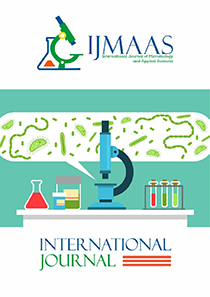Microbiological and Polycyclic Aromatic Hydrocarbon Profile of Pomadasys commersonnii Harvested from Crude Oil Impacted Creeks in Borikiri, Port Harcourt, Nigeria
Vol 1, Issue 1, 2023
KEYWORDS
Crude oil, PAH, Creek, Pomadasys commersonnii, biomagnify, carcinogen
Abstract
This study evaluated the microbiology and level of PAH contamination of Pomadasys commersonnii and surface water along Ikpukulu Creek in Borikiri. Standard microbiological procedures were used to assess and identify total heterotrophic bacteria (THB), total fungi and hydrocarbon utilizing bacteria (HUB) and fungi (HUF). PAHs were analyzed using Gas chromatographic–Flame Ionization Defector. Results revealed that, THB counts of Pomadasys commersonnii ranged from 2.4 x 106 to 1.2 x 107 cfu/g, HUB; ranged from 2.0 x 103 to 1.3 x 104cfu/g, Fungi; ranged from 1.9 x 103 to 2.3 x 105 cfu/g and HUF ranged from 2.2 x 102 to 2.5 x 103cfu/g. Genera of HUB and HUF identified from fish and water samples were; Pseudomonas, Bacillus, Aeromonas, Proteus, Serratia, Citrobacter, Staphylococcus, Escherichia, Corynebacterium, Acinetobacter, Flavobacterium, Micrococcus, Enterobacter, Penicillium, Mucor, Rhizopus, Fusarium, Cladosporium, Metshnikowia, Candida, Cryptococcus, Leucosporidium, Rhodotorula, Aspergillus, Alternaria, Geotrichium, Saccharomyces, and Trichoderma. PAHs level in fish samples ranged from 0.025mgkg-1 – 0.035mgkg-1 with a mean of 0.031mgkg-1, while PAHs in water ranged from 0.0035 – 0.0045mgL-1 with a mean of 0.004 mgL-1. Highest PAH recorded was benzo(b)fluoranthene (60%). Results showed that the fish biominified pyrenes, benzo(a)anthracene and benzo(b)fluoranthene. Contamination factor (c1f) was 0.12 (c1f < 1), which indicates, Cancer Risk Index using indeno1,2,3,(cd)pyrene as bioindicator showed no cancer risk in consumption of Pomadasys commersonnii harvested from Ikpukulu Creek. There is significant difference at p<0.05 in PAH level between surface water and Pomadasys commersonnii indicating the fish has the tendency of biomagnifying some PAHs. Therefore, the inhabitants should be enlightened of the dangers of these pollutants (PAHs) in food chains. Some of the hydrocarbon utilizing microbes in this study could be useful in bioremediation of hydrocarbon and PAH contaminated environments.
Current: Vol. 4, Issue 1, 2025

Call for papers
The International Journal of Microbiology and Applied Sciences warmly welcome your valuable articles for publication.
